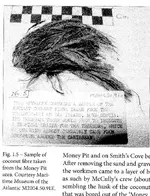Dave Rishar
Silver Member
Though I'm not saying they could have visited or buried anything on Oak Island, I do not consider it impossible, given good weather for the passage, for a successful voyage to somewhere else in the Americas to have taken place. Or at least an attempt to have been made, given the circumstances they faced at the time.
It was certainly not impossible to make that trip. We know for a fact that the Icelanders could make it to Greenland multiple times, and Newfoundland at least once. The Sagas suggest that they made it significantly further south than that. However, that voyage was not without risk.
A friend of mine was recently (still is) involved with the replica Viking ship the "Draken Harald Harfagre" which recently sailed from Norway to Bay City, Michigan. An open deck ship, they had their moments crossing the Atlantic in April, but were quite surprised by the ferocity of the Great Lakes. I stand by my statement, any vessel that can reliably sail the Mediterranean can sail the Atlantic. Of course cautions would be advised with any vessel, and I wouldn't make the trip in April myself!
All good points, but consider the risk management aspect of this. One position is that the Templars had something so important that they not only had to get it out of Europe, but that it would be a good idea to cross the Atlantic. That's dangerous. I can't put a percentage on the failure rate of transatlantic voyages during that era, but it was known that ships didn't always make it. If that cargo is important enough to justify the effort and expense of getting it across the Atlantic (and presumably in a giant and elaborately booby trapped hole in the ground), is it also unimportant enough that the chance of it ending up at the bottom of the ocean is acceptable?
Hell, the Atlantic has been crossed in a rowboat.
And the English Channel has been swum. However, if I need to get something important from the UK to France, swimming the channel would not be one of my plans. If it's important and it has to go to France, then it goes to France or it doesn't go at all. Getting it to the bottom of the Channel benefits nobody, least of all me. (As I will be there with it.)
Something I'm just tossing out there that seems to be missed by everyone discussing the coir. While it has been theorized that coir was used to make a french drain or as a filter to keep particles out of a french drain. It wouldn't work that way for long as it would get clogged itself.
It hasn't been missed. I've mentioned that in other threads. I'd thought that I'd mentioned it in this one too, but I seem to have been mistaken. By design, a filter clogs so that something else does not have to. I would argue that a tunnel of some sort would silt up or otherwise clog much more slowly than an unserviceable wad of coir would, and if the filter clogs then the entire thing is clogged. We use filters because they're easier to replace than pipes, but if there's no way to replace the filter then you may be better off without one.
Continue to ask the question, but do not expect a rational response.





